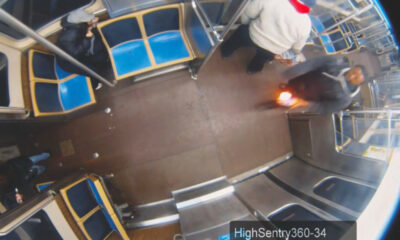Reviews
Facelifts Reimagined: How Modern Techniques Are Delivering Natural, Lasting Results

If you’re considering a facelift procedure, you’re likely searching for ways to rejuvenate your appearance and address signs of aging. Facelifts by Dr. Jay Calvert represent one of the most effective surgical approaches to restore a more youthful facial contour. Before scheduling your consultation, it’s important that you understand what the procedure entails, what you can expect during recovery, and the potential complications that could arise.
Understanding Your Facelift Procedure
When you opt for a facelift, you’re choosing a surgical procedure that can significantly reduce sagging in the middle of your face, remove deep creases around your nose and mouth, and eliminate loose skin and fat under your chin and jaw. Jay Calvert facelifts use advanced techniques that focus on both skin tightening and addressing the underlying facial structures for natural-looking results.
You should know that modern facelifts of Beverly Hills have evolved significantly from the stretched look of the past. Today’s procedures aim for subtle rejuvenation that maintains your natural facial expressions and characteristics.
What You Can Expect Before Your Procedure
Before undergoing surgery, you’ll have a comprehensive consultation. During this meeting, your surgeon will evaluate your facial anatomy, discuss your goals, and determine if you’re a good candidate for the procedure. You’ll need to provide your complete medical history and list any medications you’re taking.
You should prepare for your recovery by arranging for someone to drive you home after surgery and potentially help you for the first few days. Dr. Jay Calvert’s Beverly Hills facelift patients are typically advised to stop taking certain medications and supplements that can increase bleeding risk in the weeks leading up to surgery.
Your Recovery Timeline
After your procedure, you can expect:
First 24 to 48 Hours
You’ll experience swelling, bruising, and some discomfort. Your face will be bandaged, and small drainage tubes might be placed to prevent fluid accumulation. Pain medication will help manage your discomfort.
First Week
You’ll need to keep your head elevated, even while sleeping. Stitches are typically removed within five to seven days. Most patients who receive facelift services in Beverly Hills take at least one week off from work.
Weeks 2 to 3
Bruising will begin to fade, but some swelling will persist. You may experience numbness, tightness, or changes in skin sensation, which is normal during this period.
Weeks 4 to 6
You’ll start to see more definitive results as swelling continues to subside. Most patients feel comfortable appearing in public and resuming most normal activities.
6 Months and Beyond
The final results of your facelift will be apparent as all residual swelling resolves. The improvements from Beverly Hills facelift procedures can last for many years, though they won’t stop the natural aging process entirely.
Potential Complications You Should Consider
While facelifts by Dr. Jay Calvert are generally safe, as with any surgery, complications can occur. You should be aware of these potential risks:
- Hematoma: A collection of blood under the skin that may require surgical drainage
- Infection: While rare, infections can occur and typically require antibiotic treatment
- Nerve injury: Temporary or permanent numbness or weakness in facial muscles
- Scarring: While incisions are placed strategically to minimize visibility, some scarring is inevitable
- Skin necrosis: Death of skin tissues, more common in smokers
- Hair loss near incisions: Usually temporary but can be permanent in rare cases
- Asymmetry or contour irregularities: May require revisional surgery
- Anesthesia complications: Reactions to anesthesia can range from mild to severe
Endnote
Before proceeding with Dr. Jay Calvert’s Beverly Hills facelift, you should have a thorough understanding of both the benefits and risks. Take time to ask questions, review before-and-after photos, and ensure your expectations align with what can realistically be achieved.

-

 World3 days ago
World3 days agoEthiopian volcano erupts for first time in thousands of years
-

 Legal1 week ago
Legal1 week agoMichigan man JD Vance sentenced to 2 years for threatening Trump and JD Vance
-

 Legal1 week ago
Legal1 week agoWoman in critical condition after being set on fire on Chicago train
-

 World1 week ago
World1 week agoHurricane Melissa registered 252 mph wind gust, breaking global record
-

 Legal6 days ago
Legal6 days agoSuspect in San Diego stabbing shot by authorities after fleeing into Mexico
-

 Legal1 week ago
Legal1 week ago1 dead, 2 injured in shooting at Dallas Walmart parking lot
-

 Legal7 hours ago
Legal7 hours agoUtah Amber Alert: Jessika Francisco abducted by sex offender in Ogden
-

 Health6 days ago
Health6 days agoMarburg virus outbreak in Ethiopia grows to 6 confirmed cases




